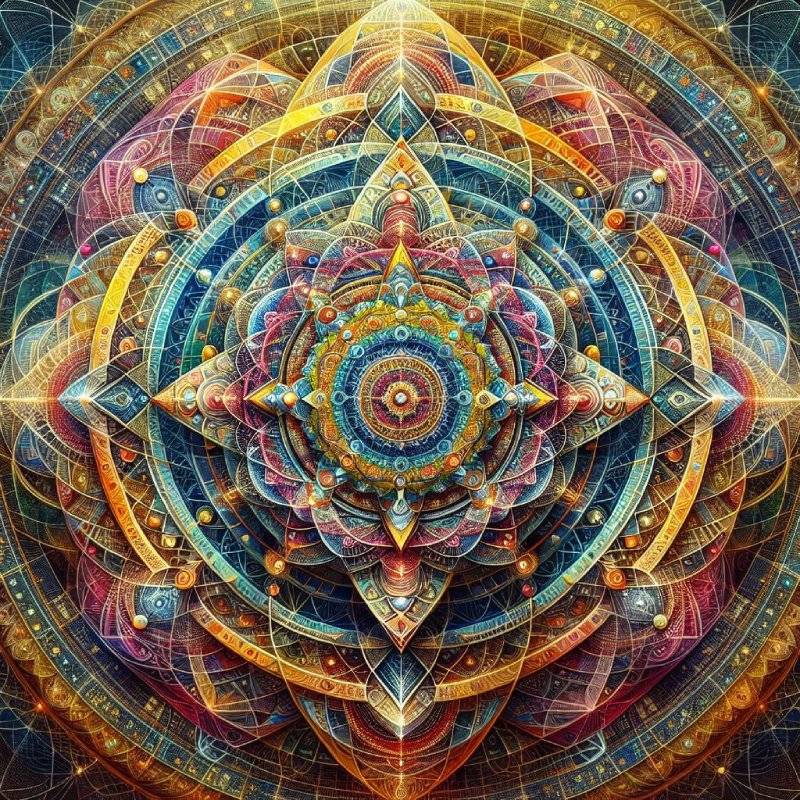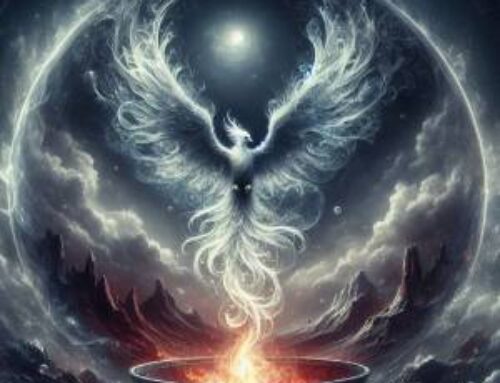Contents
Ah, the age-old question—what’s the difference between theurgy vs thaumaturgy? Magic’s intricate tapestry is woven with these two practices, each a distinct thread that leads practitioners down varied mystical paths. We’re diving deep into these enchanting domains, examining their nuances, and what truly sets them apart.

Imagine, if you will, the heart of theurgy beating with the rhythmic cadence of divine invocation. Derived from the Greek words “theos” (god) and “ergon” (work), theurgy’s essence lies in drawing down the divine. It’s not about wielding power for power’s sake, but rather a spiritual pilgrimage, a quest for divine union. It’s like scaling the celestial heights—each step, each ritual, a plea for enlightenment. The theurgist isn’t just a mage; they’re a seeker, yearning for the sacred embrace of higher realms.
Contrastingly, thaumaturgy, with its roots in “thauma” (miracle) and “ergon” (work), is the art of the miraculous. Thaumaturgists are the miracle workers, the magicians who bend reality to their will. Their magic is tangible, material. They heal, they protect, they influence the world around them with a deft flick of their wands or an incantation. Here, the goal is visible change—concrete outcomes that manifest in the physical realm.
Invocation of Divine Powers
In theurgy, rituals are not mere performances. They’re intricate dances of symbols and chants designed to summon the divine. Imagine a scene from an ancient temple: incense wafting through the air, candles flickering as the theurgist recites invocations, calling forth gods or celestial beings. These rituals aren’t just for show—they’re sacred acts meant to bridge the mortal with the immortal, guiding the soul toward spiritual awakening.
Thaumaturgy, on the other hand, feels more like the work of an alchemist or a wizard from folklore. Think of Merlin, concocting potions or casting spells to cure ailments or foresee futures. The thaumaturgist’s tools are diverse—amulets, potions, spells—all geared towards altering the material world. They might chant, sure, but the aim is different: it’s to make something happen here and now.
Symbolism and Rituals
Symbols in theurgy are like keys to the divine locks. They resonate with specific energies, each ritual meticulously crafted to align with higher spiritual vibrations. Picture talismans etched with sacred geometry, elemental weapons blessed by ritual, and temple paraphernalia, all working in unison to elevate the soul. It’s an art form, where every detail, every symbol, is a thread in the tapestry of divine connection.
The outer religion is connected with the inner religion through the ceremonies. The outer school of the mysteries is connected to the inner one through the hieroglyphs (1).
Conversely, the thaumaturgist might be seen donning a cloak, surrounded by ingredients for a spell or a circle inscribed with runes. Each element has a purpose, a power. They draw on the natural world, the mystical forces that dwell in the shadows and the light, to create real-world effects. It’s about mastery over the elements, bending them to one’s will to achieve desired outcomes.
Spiritual Transformation
The endgame for the theurgist? Transformation, not just of spirit but of the very essence of being. It’s a journey that transcends the physical, lifting the practitioner to realms of enlightenment that defy ordinary human experience. Imagine, if you will, the theurgist meditating, eyes closed but mind open, becoming a conduit for divine energy. This awakening is profound, a metamorphosis that elevates the soul beyond the mundane.
Yet, the thaumaturgist’s transformation is more grounded. Their magic transforms the world around them, not just their inner self. They heal wounds, protect the vulnerable, and manipulate the fabric of reality. It’s a power that’s visible, tangible—a clear testament to their magical prowess.
Theurgy vs thaumaturgy represent the dual aspects of magical practice—one reaching for the heavens, the other rooted in the earth. Whether seeking divine union or wielding the miraculous, these paths offer rich, complex experiences for those who dare to tread them. So, are you a theurgist or a thaumaturgist? The journey awaits, steeped in ancient wisdom and arcane power.
Practical Magic and the Manipulation of Elemental Forces
Have you ever heard of thaumaturgy? It’s like the magician’s bread and butter, the art that goes beyond mere theory to produce real, tangible outcomes. Thaumaturgists—think miracle workers—hold the power to twist and turn natural forces at their will. When we speak of thaumaturgy, we’re talking about healing, protecting, and influencing events in ways that seem almost, well, miraculous.
Let’s get down to brass tacks—thaumaturgy’s all about practical magic. This isn’t just waving wands and muttering incantations for show. It’s about real-world applications: mending wounds, shielding from harm, altering the course of events. Practitioners wield an arsenal of spells, incantations, and a collection of enchanted tools designed to enact change. They don’t just sit around chanting; they dive into the fray and make things happen.
An integral part of this craft is elemental manipulation. Imagine being able to command the very elements—earth, air, fire, water—to do your bidding. It requires more than just magical prowess; it demands a profound understanding of the natural world. Aligning oneself with these elemental forces is no small feat and speaks to the deep connection between thaumaturgists and the environment.
Miraculous Outcomes in the Material World
The essence of thaumaturgy lies in producing outcomes that seem straight out of a fantasy novel—miracles in the flesh. From curing ailments to bending circumstances to one’s favor, the feats of thaumaturgists are nothing short of extraordinary. They are often sought for their ability to deliver swift, practical solutions where conventional methods fall short.
Comparative Analysis: Theurgy vs Thaumaturgy
Now, contrast this with theurgy—a realm equally fascinating yet fundamentally different. Theurgy is the pursuit of divine union and spiritual enlightenment. It’s an inward journey, a transformation of the self through communion with higher powers. In stark contrast, thaumaturgy directs its focus outward, striving for immediate and tangible effects in the physical realm.
The goals couldn’t be more divergent. Theurgy aims to elevate the practitioner’s soul, striving for a mystical union with the divine. Thaumaturgy? It’s all about manipulating the physical world to achieve specific, often urgent, outcomes. This core difference drives the distinct practices and rituals of each discipline.
Diverse Methodologies and the Role of the Practitioner
Theurgical rituals are intricate, involving meditative techniques, invocations, and symbolic acts to call upon divine forces. The practitioner’s role here is to seek enlightenment and purify their soul. Thaumaturgists, on the other hand, are hands-on and practical, employing spells and elemental control to meet their ends. They’re seen as doers, miracle workers whose expertise lies in manipulating reality itself.
The roles of practitioners in these fields reflect their goals. Theurgists are seekers of truth and enlightenment, aiming for a higher state of being. Their journey is deeply personal and spiritual. Thaumaturgists, however, are seen as practical magicians, using their skills to influence and shape the material world. Their work is outward-facing, aimed at producing immediate results.
Conclusion
Theurgy vs thaumaturgy offer two paths under the broad umbrella of magical practices. One is spiritual and introspective, focusing on the divine; the other is pragmatic and results-driven, rooted in the physical world. Both require a deep understanding of supernatural forces and a rigorous commitment to their respective crafts. For those curious to delve into these mystical arts, the Hermetic Academy stands as a beacon, offering courses, initiations, and resources to guide aspiring magicians on their journey (2).
This community of light has existed since the first day of the creation of the world, and its duration will be until the last day of time (3).
FAQ- Theurgy vs thaumaturgy
1. What’s the primary difference between theurgy vs thaumaturgy?
A: Theurgy is about spiritual transformation and divine union; thaumaturgy is about achieving tangible results in the material world through magic.
2. Can one practice both theurgy vs thaumaturgy?
A: Absolutely. Many practitioners blend both to balance spiritual growth with practical outcomes.
3. What rituals are common in theurgy?
A: Invocations, meditations, and symbolic acts using talismans to connect with divine powers.
4. What magical tools does thaumaturgy use?
A: Wands, pentacles, and elemental weapons to manipulate natural forces.
5. Where can I learn more about these practices?
A: The Hermetic Academy offers extensive courses, initiations, and resources on both theurgical and thaumaturgic practices for aspiring magicians.
References:
(1) Eckartshausen, Karl von. (1802). Die Wolke über dem Heiligtum. München.
(2) Rubenstein, E. (2023). Magic: The Legacy of the Rosicrucians. Hermetic World, Paphos.
(3) Eckartshausen, Karl von. (1802). Die Wolke über dem Heiligtum. München.





